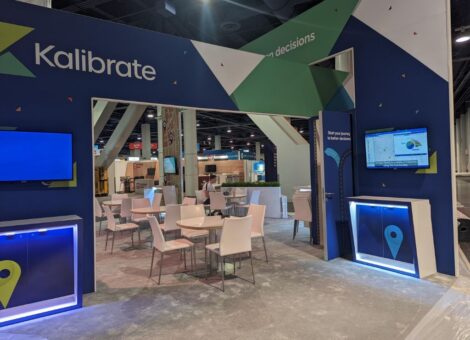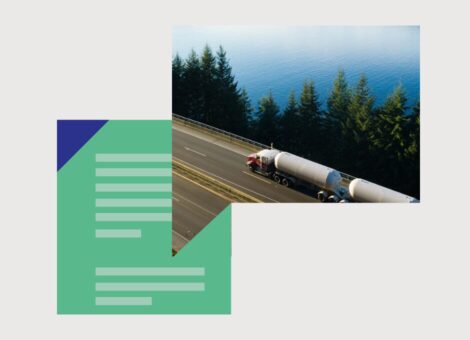How to predict the impact of changes to your fuel retail network
Nothing remains static in fuel and convenience retail. Every strategic action you take, and every adjustment a competitor makes, has an impact across your market.
Your competitors will open and close sites, you will have your own goals for expansion and rationalization, and there are market factors that none of you has any control over.
Network optimization is an essential process for any retailer that wants to compete and succeed in the long term, how do you ensure that you are making the right strategic decisions when trying to improve your network?
Finding the right locations for new sites
For a new site to drive your required volumes and hit revenue targets, it has to be optimally situated. To choose these ideal locations, you need to fully understand the geographic spread of the area.
Visual assessment of a location can give you an initial idea of traffic levels and demand, but it cannot help you accurately gauge how much fuel you will sell.
Assessment of the following data points will provide a fuller picture:
- Traffic volumes (current and historic)
- Local demand (based on population and infrastructure)
- Presence and strength of competition (or, ideally, lack thereof)
Road infrastructure (the number of lanes, the speed limit, and the ease of accessibility, all of which can determine how effectively you can entice passing consumers)
As well as looking at the present and past, you should also look toward the future.
If you’re planning to build a new-to-industry site on a previously undeveloped plot, it could be 18 months or two years before the site opens for business – and a lot can change in that time.
Is the surrounding area on the cusp of further growth and development, or is it set to depress?
Some fuel retailers purposely seek out the growing locations and plan sites in these areas ahead of time, even before there is sufficient traffic and demographic support, so that they are the first to establish a presence. Of course, being this proactive requires accurate data and sophisticated predictive science.
ANALYZING THE POTENTIAL OF ACQUISITION TARGETS
Building new sites isn’t the only network expansion method. You may be able to find some existing fuel sites that you can acquire and improve. One enormous benefit of this approach is that it is a much faster process than designing and constructing new sites from scratch.
Once you have evaluated a site’s location, demographics, and general infrastructure, you should then look at its performance potential. High volume is not the only indicator of a prime target. In fact, focusing on volume alone can be misleading and result in unwise investments. You have to consider each site through the prism of its future potential.
A high-performing site may be a vastly overperforming one, due to the current owner or operator having effective tactics and strategy in place. If you were to take over that site, there would be no guarantee that you could replicate that level of success – especially without a clear understanding of what is driving the current retailer’s performance.
By analyzing each site’s performance against its present and future potential, you can validate your decision-making and acquire only the sites that you can improve.
Assessing the danger of cannibalization
No retailer opens a new site with the intention of stealing volume or revenue from its other sites, but it commonly happens, usually as a result of poor planning or misguided intuition.
Avoiding cannibalization should always be a priority in your network planning activity, because your long-term profitability depends on it.
PROXIMITY
The most common cause of cannibalization is the construction of a new site in too close proximity to one or more of its siblings.
For example, if a site is situated on an extremely busy, multi-lane road that has a high speed limit, it may be inaccessible (or almost) for consumers who are passing on the opposite side of the road. Building another site 2km away on the opposite side of the road might therefore be a wise decision – because this should mean that the two sites complement one another rather than competing.
However, the proximity itself does not automatically mean that sibling sites will cannibalize. It depends how the two sites relate to each other, and whether they are serving the same consumers.
ACTIONS WITHIN YOUR SITES
Even changes that seem only positive and advantageous – such as the addition of new and improved facilities – can cause your sites to cannibalize, specifically where these changes result in inconsistency across certain sites.
Another example. You add a convenience store to site A but not to site B (its nearest sibling). As a result of that change, site A would automatically become the more attractive site of the two, and may start to appropriate volume from site B, due to its enhanced facilities. The convenience store will generate additional revenue for its location and for your wider network, but this might not be enough to counteract the loss in profitability at the smaller site.
What sorts of data are you collecting about your customer base? Advancements in technology mean that vehicles (and therefore consumers) can now be tracked anonymously through unique identifiers, enabling you to visualize how your changes are affecting consumption patterns. This includes site loyalty, giving you clear insight into whether your sites are cannibalizing, and to what extent. To enhance your offering at each site, you need to be gathering and analyzing data on your customers – and acting on your findings.
OTHER RETAILERS’ ACTIONS
Without the right market intelligence, it will always be difficult to identify what is really causing your fluctuations in volume.
A 20% loss in volume following the addition of a new site may be cannibalization in action, but it could also be caused by competitor activity – such as new builds, closures, and expansion.
Identifying the poor-performing sites for closure
Rationalization is another fundamental part of optimizing your network and maximizing its overall profitability.
This process is all about identifying the low-potential, underperforming sites that are poorly situated – the sites that have bleak futures ahead of them. The cost to serve each of these sites is draining profitability from the rest of your network, and they should therefore be candidates for closure or debranding.
As with acquisition, the high-potential underperformers present opportunity for improvement – and your task is to turn them around rather than close them. If you do sacrifice these sites, it creates an opening for your smartest competitors to acquire them, optimize their performance, seize volume and revenue from your network, and increase their own market share.
Using data and software to predict network optimization outcomes
The only way to accurately gauge every aspect that we’ve talked about here is to harness the latest technology.
As a network planner today, you can make better decisions through data insights and by using software to simulate – with pinpoint accuracy – the effect that each proposed change would have on your network and on the market as a whole.
The result?
Validated decision-making.
A sophisticated network planning tool such as Kalibrate Planning can help you to…
- Evaluate the viability of locations for building new sites
- Identify lucrative acquisition targets with high potential
- Avoid cannibalizing your existing network
- Select the right sites for rationalization
Find out more about Kalibrate Planning
Read more articles about:
UncategorizedSubscribe and get the latest updates
You may unsubscribe from our mailing list at any time. To understand how and why we process your data, please see our Privacy & Cookies Policy
Related posts
Location intelligence
Meet the Kalibrate team attending ICSC Las Vegas 2024
Learn more about the team attending the ICSC show in Las Vegas.

Location intelligence
Meet the Kalibrate team: Jordan Roberts, Director of Data Partnerships
Meet Jordan Roberts, our Director of Data Partnerships. In this short video, she describes her role and the reasons...

